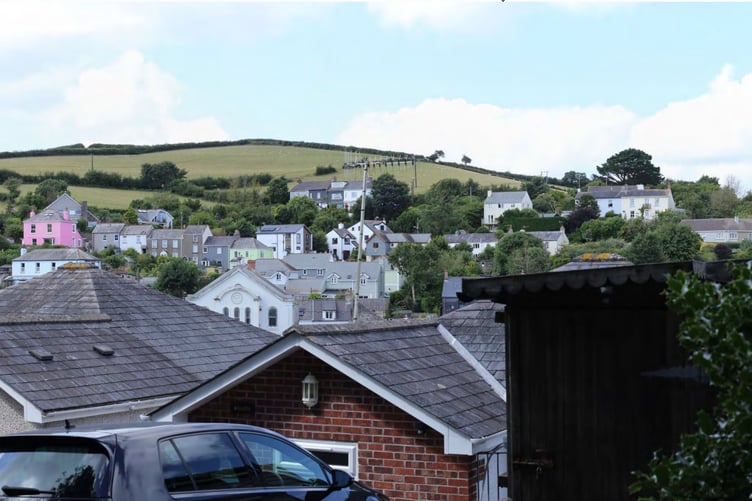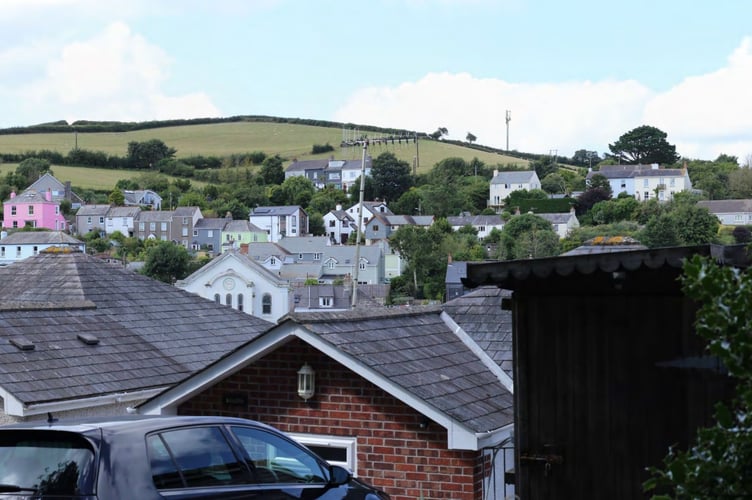OPPONENTS of a phone mast set to be erected in Millbrook say that the mast will “dominate the landscape” and that “the mast is not needed as there is already excellent mobile coverage”.
Telecomms infrastructure company Cornerstone has been told by Cornwall Council that it does not need prior approval to install a second, 17.5m high mast on Blindwell Hill in Millbrook.
But this has caused dismay among objectors, who have pointed out that a previous application for a mast in a similar location was rejected by the local authority and planning inspectorate.


Cornerstone says that the new radio base station is needed in order to improve network coverage for Vodafone. It says that the demand for faster and improved mobile connectivity continues to grow. The introduction of 5G brings not only economic advantages to businesses, it says, but also opens up greater possibilities in areas such as healthcare and personal leisure. Cornerstone names remote doctors appointments, more reliable connection to the emergency services, and the ability to use Virtual Reality among the potential benefits.
Although there is already a mast on Blindwell Hill, 140m away, Cornerstone says that this “cannot be shared due to radio frequency and design constraints”.
The nearest dwellings are situated on lower ground approximately 185m away to the south, with Millbrook Primary School approximately 190m to the south-east.
Millbrook Parish Council put in an objection to the mast on the grounds of its height, the visual impact it would make, and the “lack of blending with its surroundings”. The council said it would have supported a mast of 15m or lower.
In his report, planning officer Craig Hewitt lists how the mast fulfils relevant national and local planning policy. He states: “Although the proposed electronic communications equipment would be in a relatively prominent position, visible from large parts of Millbrook and the surrounding area, …the monopole design with minimal external features, as opposed to a lattice structure, assists in assimilating the development into its setting.
“The applicant has submitted a detailed Landscape Visual Impact Appraisal, as well as nine alternative sites that have been explored and discounted for the location of the proposed mast.
The visual impact in the proposed location would not be so severe as it would be in other locations. A shared mast in conjunction with the existing nearby telecommunications apparatus would require a 25m lattice structure that would be more impactful on the surrounding landscape.
“On balance, the benefits to the wider network would outweigh the visual harm of the proposals.”
In response to questions about the risks to health, Cornerstone states: “We recognise that the growth in mobile communication has led, in some cases, to public concern about perceived health effects of mobile technology, in particular about siting masts close to local communities. Quite naturally, the public seeks reassurance that masts are not in any way harmful or dangerous.
“We are committed to providing the latest independent peer-reviewed research findings, information, advice and guidance from national and international agencies on radiofrequency (RF) electromagnetic fields. Cornerstone ensure that our radio base stations are designed and built so that the public are not exposed to radio frequency fields above the guidelines set by the International Commission on Non-Ionizing Radiation Protection (ICNIRP). In fact, radio base stations operate at low power and emit levels of radiofrequency fields many times lower than the ICNIRP general public guidelines.”
But local people have spoken out about their fears over the elderly and the very young, who are considered “sensitive receptors” to electromagnetic radiation, and those with metal implants such as joint replacements who are “outside the scope of the ICNIRP guidelines”.
Research on humans in real-life settings is still being carried out. UK Research and Innovation is a non-departmental public body sponsored by the Department for Science and Technology. Together with the Universities of Bristol and Exeter, it’s staging research with 23 other institutions in 12 countries into the impact of 5G on human health.
It says: “The increasingly widespread use of 5G raises important questions about the potential effects related to long-term exposure. Particularly vulnerable populations may include young people and workers in industries where 5G is deployed.
“Our research is specifically designed to address such uncertainties. The research will develop real-life (rather than laboratory) methods to assess RF-EMF exposure and explore whether there may be any neuropsychological effects or broader health impacts at a population level.”
On the matter of health, the planning officer says: “The Government has stated that the planning system is not the place for determining health safeguards, and that if an ICNIRP certificate is provided, Councils should not need to consider health considerations and concerns further.
“If when a mast is operational, there is evidence an operator is not meeting its statutory responsibilities, the matter can be referred to the Health and Safety Executive to investigate.”




